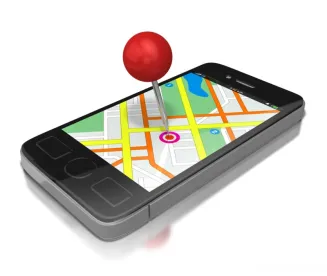Pokémon Go, a free iPhone and Android gaming app, was released recently and promptly followed by a media frenzy. The app is built on Niantic Inc.'s "Real World Gaming Platform" and uses GPS technology to track users' locations and allow interaction between the virtual components of the app and real-world locations. Its initial release raised both safety and also privacy concerns about the use of users' Google data, including speculation that app developers could access the personal emails of players, but the concerns were shown to be overblown. Of course, any app that collects user data can carry security risks and may raise privacy concerns, but Pokémon Go does not appear to carry any unique risks.
The other area of Pokémon controversy is the real-life injuries reported in connection with the game. The interaction between the virtual world on the user's mobile device and the real world have been blamed for players walking, bicycling, or driving with their eyes on a screen instead of alert to potential hazards. Two San Diego men were found to have fallen down a cliff while playing the game, and a New York driver hit a tree while chasing Pokémon in his car. Now the internet is abuzz about a teenager who was hit by a car while crossing a street while distracted by the app, in part because of her mother's comments indicating that the game was to blame for her injuries.
In the litigation context, this raises the question: can game-makers be held liable for injuries resulting from users being distracted by the game?
Blaming manufacturers and developers for the actions of distracted users of their products is nothing new, and while we have not seen success yet in that type of litigation that does not mean that there will not be. Most likely, such litigation would come in the form of a products liability suit under a theory of liability for either failure to warn, or design defect.
Does an app maker have a duty to warn players that the game may be distracting?
In Connecticut, a duty to warn arises when hidden dangers may arise in the use of a product in the ordinary way, or if danger may arise from foreseeable misuse. A warning may be found to be necessary based on the likelihood that the product would cause the harm suffered by the plaintiff, the ability of the seller to anticipate that the expected user would be aware of the risks involved in using the product and the nature of the potential harm; and the technological feasibility and cost of warnings and instructions. This duty only applies to hidden dangers, however - not dangers that are obviously present.
Even assuming the game manufacturer is a "seller" for the purposes of the Connecticut statute, it seems unlikely that a duty to warn would arise under these circumstances. Given high levels of publicity given to distracted driving, and Connecticut's expansive distracted driving law - not to mention common sense - app developers could have a strong argument that playing Pokémon Go while operating a motor vehicle or crossing a highway are "obvious" dangers.
In addition, walking or driving while distracted may not even be considered a danger arising from the use of a product. A California court found, in a case involving a failure to warn claim arising out of distracted driving related to use of a GPS system, that the fact that distracted driving may cause an accident is not a danger inherent to the GPS product. Rather, it is a danger that is inherent to driving while distracted at all. Similar reasoning could certainly be used in relation to Pokémon Go: walking into traffic without looking, for example, is dangerous, regardless of whether the pedestrian is playing Pokémon Go. The danger arises not from the product, or even from the use of the product, but from the injured party's inattention.
The Warnings Provided
The game developer in this case tried to preempt any question of a duty to warn by providing proper warnings in the game from the outset. Pokémon Go's gaming interface begins with a warning for users to stay alert during game play. In addition, the Pokémon Go Terms of Service includes the following "Safe Play" disclaimer:
"During game play, please be aware of your surroundings and play safely. You agree that your use of the App and play of the game is at your own risk, and it is your responsibility to maintain such health, liability, hazard, personal injury, medical, life, and other insurance policies as you deem reasonably necessary for any injuries that you may incur while using the Services. . . To the extent permitted by applicable law, Niantic, The Pokémon Company ("TPC"), and TPCI disclaim all liability related to any property damage, personal injury, or death that may occur during your use of our Services, including any claims based on the violation of any applicable law, rule, or regulation or your alleged negligence or other tort liability."
Although there is a warning, the question arises of whether the one provided was sufficient to convey the danger present in the use of this product. Factors to be considered will be whether the warning was placed in proper prominence together with the obviousness of the danger. It is hard to imagine a court or jury finding that a warning presented at the start of game play instructing players to pay attention to their surroundings is not prominent enough, and although the warning does not specifically mention the dangers of walking into traffic or off of a cliff while playing Pokémon Go, it would seem that the dangers of walking or driving while looking at a screen should be properly obvious without a specific warning.
Would a "better" warning prevent injury?
Even if a plaintiff could meet the standards listed above, to recover on a duty to warn theory under Connecticut law, the plaintiff will still have to prove that they would have acted differently if they were made aware of the danger, and thus avoided injury. In a case involving a game like Pokémon Go, a plaintiff alleging that the warning given was inadequate would have to also prove that if an adequate warning had been provided, they would not have been injured - would not have stepped into traffic or off a cliff or driven their car into a tree, as in the examples above.
Under present law, a case based on a failure to warn theory of liability seems unlikely to succeed, but the law in this area is relatively unsettled as it applies to apps, games, and handheld electronics. As the real world provides more examples of AR encroachment, legal theories and potential liabilities may expand. Video game sellers and other providers of AR experiences are wise to proactively address potential liabilities and include warnings like the ones on the Pokémon Go app to help protect them in the event of litigation. Besides, there is still the question of the other possible theory of liability - design defect. Next time, we will analyze whether a design defect claim could prevail against the developers and distributors of video games like Pokémon Go.




 />i
/>i

